
Episyrphus balteatus, sometimes called the marmalade hoverfly, is a relatively small hoverfly (9–12 mm) of the Syrphidae family, widespread throughout the Palaearctic region, which covers Europe, North Asia, and North Africa. The upper side of the abdomen is patterned with orange and black bands. Two further identification characters are the presence of secondary black bands on the third and fourth dorsal plates and faint greyish longitudinal stripes on the thorax. Its color patterns may appear wasp-like to other animals, such as birds, protecting it from predation.

Leucozona glaucia, the Pale-saddled Leucozona is a Palearctic hoverfly. Larvae feed on ground layer aphids. Adults are usually seen visiting flowers.

Eupeodes luniger is a common species of hoverfly.
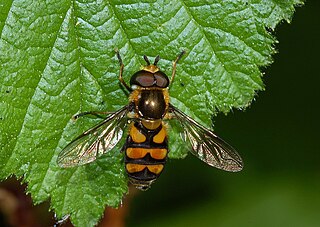
Didea fasciata is a Holarctic species of hoverfly.
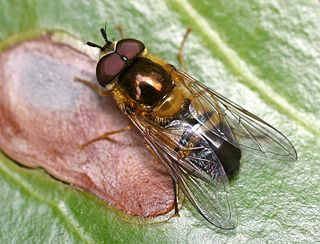
Epistrophe eligans is a European species of hoverfly.

Leucozona laternaria is a European species of hoverfly.

Leucozona lucorum is a Palearctic and Nearctic species of hoverfly.
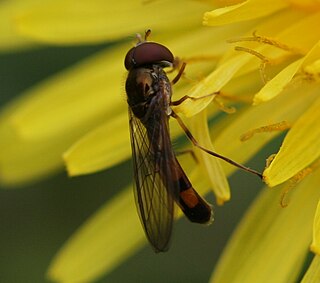
Melanostoma scalare, the chequered hoverfly, is a very common species of hoverfly.

Melanostoma mellinum is a very common species of hoverfly found in many parts of Britain, Europe including the Mediterranean basin and North Africa, the East Palearctic, and North America.

Baccha elongata is a species of hoverfly in the genus Baccha.
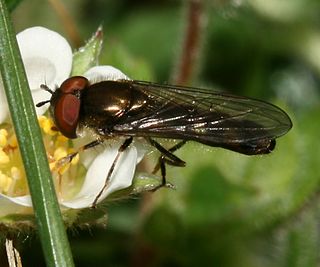
Platycheirus albimanus is a common widespread species of hoverfly. A holarctic species its range includes Greenland, Iceland, Britain, mainland Europe, Russia, across Siberia to the pacific coast, the Philippines, Alaska, western Canada and United States.

Platycheirus granditarsus is a species of hoverfly. It is found in many parts of Britain and Europe. Typical habitat includes marshy meadows and ditches, where it can be found between May and October, though it is at its commonest between July and September. The most distinctive feature of this fly is the red-orange abdomen most easily seen as it takes off or alights.

Platycheirus manicatus is a species of hoverfly. It is found across the Palearctic and in Alaska.
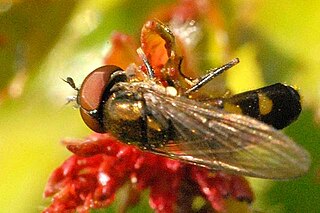
Platycheirus splendidus is a species of hoverfly. It is found in many parts of Britain and Europe.

Epistrophe grossulariae is a Holarctic species of hoverfly.
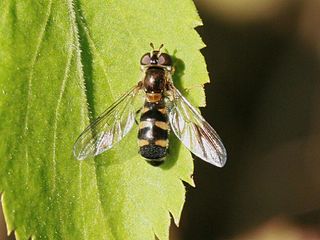
Meligramma triangulifera is a European species of hoverfly. It was described by Zetterstedt in 1843.
Melanostoma dubium is a Palearctic species of hoverfly.
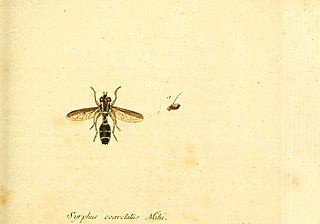
Doros profuges is a Palearctic species of hoverfly.

Epistrophe nitidicollis is a European and North American species of hoverfly.

Epistrophe melanostoma is a European species of hoverfly.


















